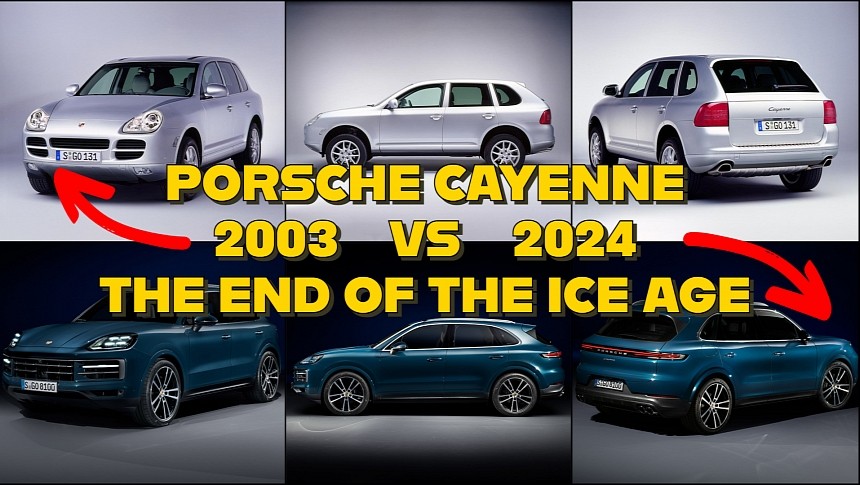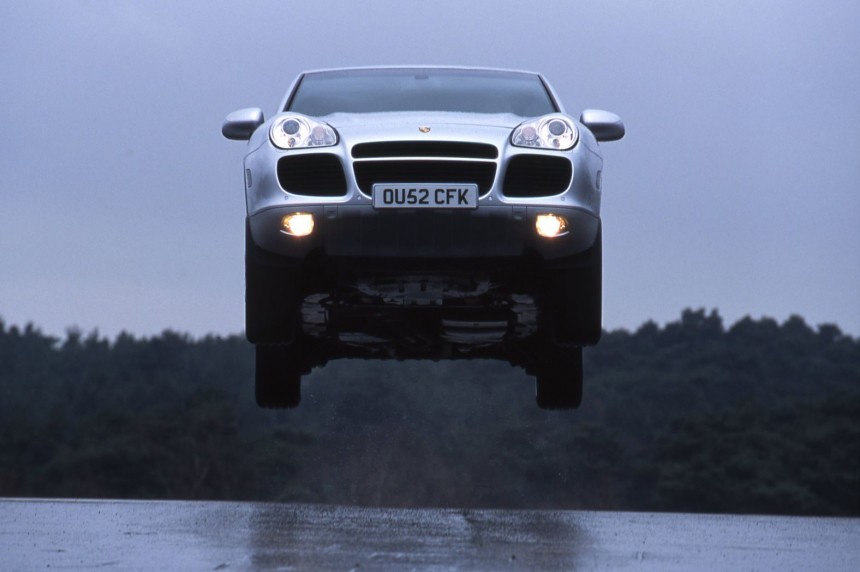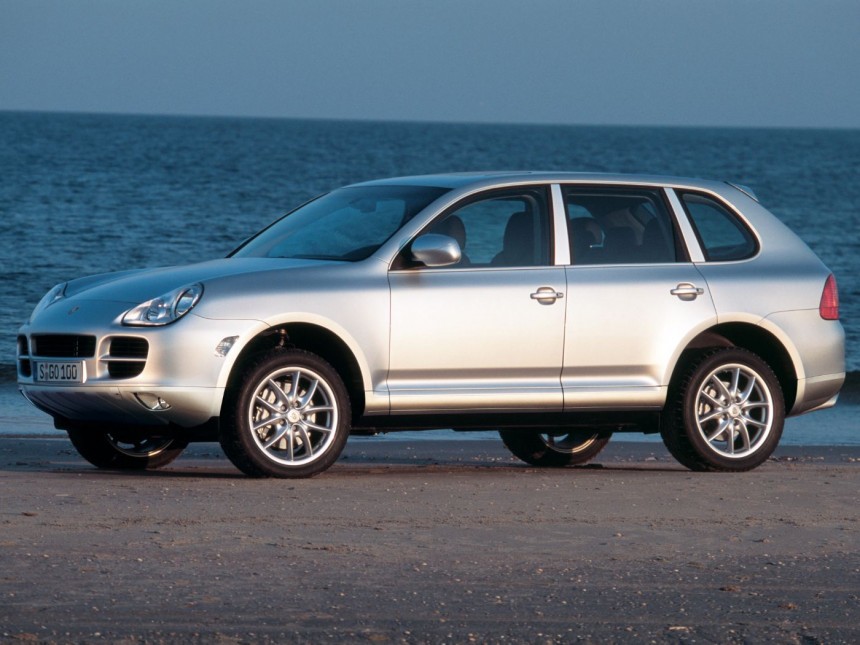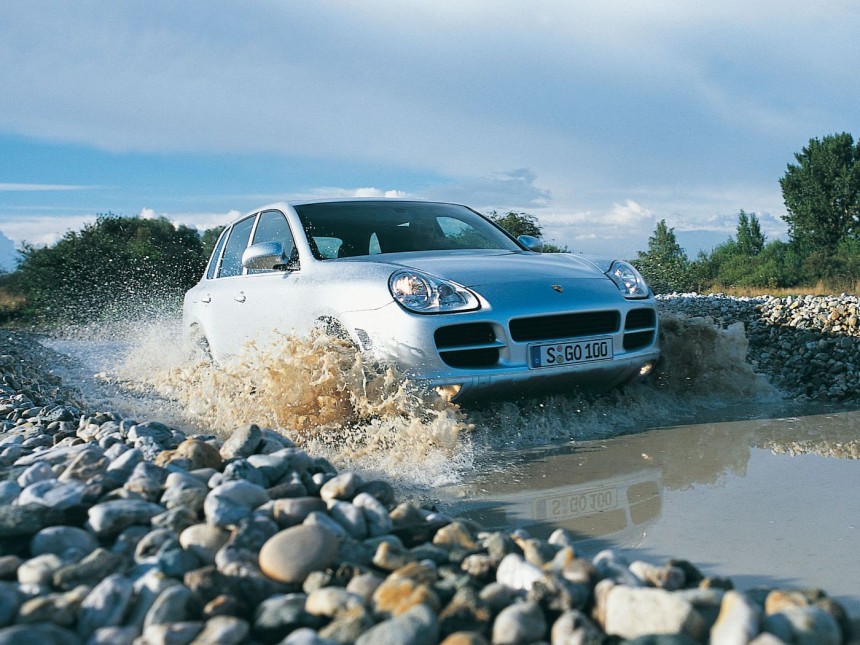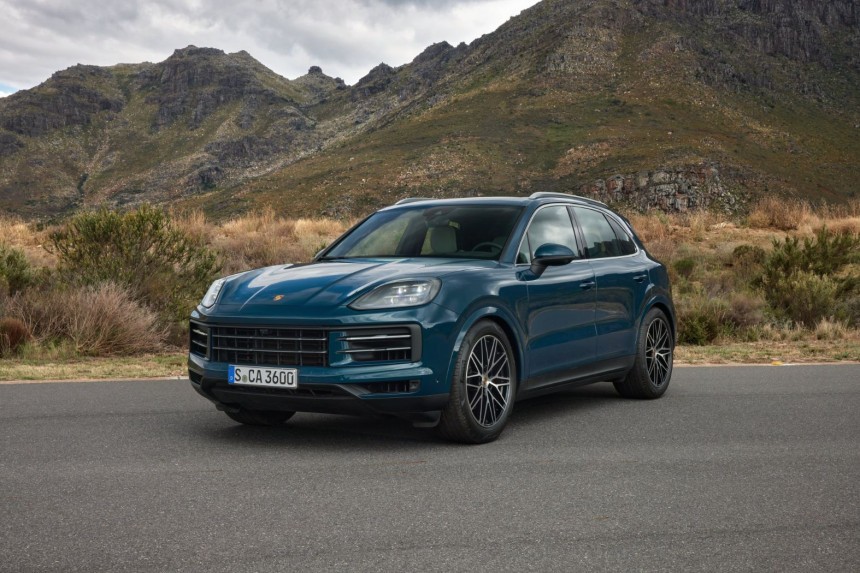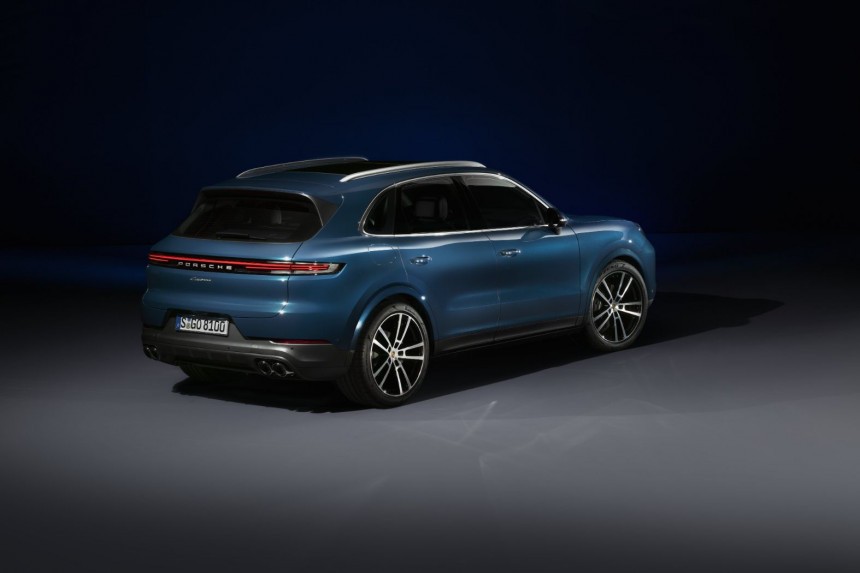The 1990s were a volatile period for luxury and sports car makers, and Porsche was among the most vulnerable to the recession that took place in the early part of the decade.
It is easy to take Porsche’s current success for granted and forget that the carmaker was this close to either declaring bankruptcy or getting swallowed up by its three-pointed star neighbor, BMW, or Volkswagen in the first half of the 1990s. The company’s global sales had fallen from over 50,000 cars in the mid ’80s to less than a third of that number in 1993.
It was not all Porsche’s fault, as the carmaker was also struggling with higher production costs due to the global recession, but the aging model lineup and inefficient production process did not help.
You must remember that the 911 was still air-cooled back then, while the 944/968/928 architecture had its roots in the 1970s.
Thankfully, before the water-cooled 996 and first-generation Boxster saved the company, it was Toyota, or former Toyota engineers to be more specific, who took Porsche out of the gutter and streamlined its production process.
Long story short, Mercedes initially said ‘yes’ because it was already working on the first-generation M-Class, but the two companies diverged on their economic relationship. So, all the planets became aligned for Porsche to develop its first ever SUV together with Volkswagen.
While the Cayenne appeared as an idea in the mid-90s, it took Porsche (and VW) several years to pull their resources together and finally unveil the results of their hard work in 2002. Following those turbulent times, the third millennium was finding the Stuttgart sports car maker in a bit of a pickle, because not exactly everyone cheered the Cayenne when it first came out.
We are talking about Porsche here, a company that had become synonymous with sports cars like the iconic 911, arguably the greatest sports car of the 20th century, not SUVs. That said, those mixed initial reactions soon turned to adulation, and for good reason.
The first generation of the Cayenne was a tremendous success for the brand, and, in many ways, it was a change in thinking for the automotive industry and how SUVs should feel and handle.
Despite what everyone, including Porsche, was guessing in the beginning, the first generation of the model was sold in over 275,000 units over eight model years – or almost 35,000 examples reaching their happy owners per year. Nowadays, the third generation of the Cayenne was still selling like hot cakes last year, before its mid-cycle facelift, with over 90,000 examples being delivered in 2022.
Yes, it was Porsche’s first SUV, first passenger car with doors for the rear passengers, first V8-powered model since the demise of the 928 in 1995, and first off-road variant vehicle since the Porsche Super and Junior tractors of the 1950s.
You are reading this because Porsche’s Cayenne age is ending soon; the ICE age, that is.
As some of you know, the mid-cycle refresh of the current Cayenne will be the last Porsche SUV powered by internal combustion engines, as the next generation will only use electrons to supply movement. With that in mind, we decided to have a gander at how Porsche’s paradigm shift from 2002 has been evolving for the past 20-odd years, before it evolves into something else.
Starting with the 955, as its architecture was codenamed, we are looking at an old-school SUV, with a heavy-duty transfer case and up to two locking differentials, potentially making it about two-thirds as rugged off-road as a mighty Mercedes-Benz G-Class. In other words, the first-gen Cayenne was an off-roading SUV first, and a high-bodied Porsche sports car for the road second.
A lot of naysayers just saw it as a Volkswagen Touareg with Porsche headlights, but they could not have been further from the truth.
It did share a lot of parts with the Touareg and the Audi Q7, including entry level engines, and the bodies themselves were nearly identical and manufactured in the same Volkswagen factory, in Slovakia. That is where the similarities ended, though, because the Cayenne has always been an entirely different breed of animal compared to its platform-sharing brothers.
When suitably equipped, the first generation of the model could keep up with almost any serious off-roader off the beaten path, all while outhandling some real sports cars on the tarmac. You could even specify the Turbo and later the Turbo S version with a built-in air compressor that you could use to inflate or deflate your tires for serious off-road use.
Speaking of nowadays, the third and last generation of the Porsche Cayenne to be powered by Internal Combustion Engines has just gone through a mid-cycle refresh. Over two decades after the nameplate was first introduced, how does the model fare in a world that is entirely different than it was at the beginning of the millennium?
Well, the world is not the only thing that is different, so is Porsche, and so is the sports carmaker’s relationship with Volkswagen, as they went from distant cousins to half-brothers in the span of 20-odd years. Now firmly part of the VW AG Group, and in the context of a changing automotive landscape, you could say that Porsche is more preoccupied about the legacy of the Cayenne, not necessarily about its future.
The mid-cycle facelift that the model has just received signals that it is still an important part of Porsche’s current and future history. Compared to the first generation, the internally codenamed 9YA generation of the Cayenne is a lot less focused on off-road performance, but a hell of a lot better performing on the road.
Yes, it no longer has a lockable center diff, instead using a multi-plate clutch system like other road-oriented sporty crossovers, but you can spec it with a rear diff-lock.
Touching on the Turbo GT, it currently holds the record for the quickest production SUV on the Nürburgring Nordschleife, which is impressive but something to be expected from the first and only SUV developed by Porsche’s GT department. With features and on-road performance that make it not only keep up but sometimes even shame thoroughbred sports cars and even supercars, the ICE-powered Cayenne’s swan song signals the end of an era with a giant bang.
Porsche’s first SUV was and still is, in a class of its own. The future electric-only generation has a set of gargantuan shoes to fill. It entered the market to a mixed reception, but it proved itself to be unbeatable at everything the market threw at him, including a global recession and the almost total demise of diesel engines.
Porsche is now betting on an electric future, which includes 80% of its 2030 lineup, and the fourth-generation Cayenne will also be accompanied by a larger, 7-seat electric SUV.
Is the end of the ICE age an epilogue or a new beginning for the Cayenne nameplate, arguably the best SUV on the planet? Time will tell.
You can also check out the Porsche Cayenne's ICE odyssey in the following video we put together:
It was not all Porsche’s fault, as the carmaker was also struggling with higher production costs due to the global recession, but the aging model lineup and inefficient production process did not help.
You must remember that the 911 was still air-cooled back then, while the 944/968/928 architecture had its roots in the 1970s.
Thankfully, before the water-cooled 996 and first-generation Boxster saved the company, it was Toyota, or former Toyota engineers to be more specific, who took Porsche out of the gutter and streamlined its production process.
It was almost a Mercedes-Benz
Courtesy of all that streamlining, Porsche now had time and money to think about investing in new models, including a luxurious minivan and a sporty off-roader. The minivan idea obviously never caught traction, but rising SUV sales kept the 911-maker knocking on various doors, including those of its Stuttgart neighbor, Mercedes-Benz, in the hope of a collaboration.Long story short, Mercedes initially said ‘yes’ because it was already working on the first-generation M-Class, but the two companies diverged on their economic relationship. So, all the planets became aligned for Porsche to develop its first ever SUV together with Volkswagen.
We are talking about Porsche here, a company that had become synonymous with sports cars like the iconic 911, arguably the greatest sports car of the 20th century, not SUVs. That said, those mixed initial reactions soon turned to adulation, and for good reason.
The first generation of the Cayenne was a tremendous success for the brand, and, in many ways, it was a change in thinking for the automotive industry and how SUVs should feel and handle.
Brother from another mother
As it happens, the so-called PL71 platform that was used on the first Cayenne and VW Touareg, and later the larger Audi Q7, was developed by a team of a little over 300 people that worked in Weissach, at Porsche, not Volkswagen.Despite what everyone, including Porsche, was guessing in the beginning, the first generation of the model was sold in over 275,000 units over eight model years – or almost 35,000 examples reaching their happy owners per year. Nowadays, the third generation of the Cayenne was still selling like hot cakes last year, before its mid-cycle facelift, with over 90,000 examples being delivered in 2022.
You are reading this because Porsche’s Cayenne age is ending soon; the ICE age, that is.
As some of you know, the mid-cycle refresh of the current Cayenne will be the last Porsche SUV powered by internal combustion engines, as the next generation will only use electrons to supply movement. With that in mind, we decided to have a gander at how Porsche’s paradigm shift from 2002 has been evolving for the past 20-odd years, before it evolves into something else.
Origin of the species
Despite their similar design language, basic features and place in the world and basic features, there is more in common between a telephone pole and a tree than it is between the first-generation Cayenne and the third one.Starting with the 955, as its architecture was codenamed, we are looking at an old-school SUV, with a heavy-duty transfer case and up to two locking differentials, potentially making it about two-thirds as rugged off-road as a mighty Mercedes-Benz G-Class. In other words, the first-gen Cayenne was an off-roading SUV first, and a high-bodied Porsche sports car for the road second.
It did share a lot of parts with the Touareg and the Audi Q7, including entry level engines, and the bodies themselves were nearly identical and manufactured in the same Volkswagen factory, in Slovakia. That is where the similarities ended, though, because the Cayenne has always been an entirely different breed of animal compared to its platform-sharing brothers.
When suitably equipped, the first generation of the model could keep up with almost any serious off-roader off the beaten path, all while outhandling some real sports cars on the tarmac. You could even specify the Turbo and later the Turbo S version with a built-in air compressor that you could use to inflate or deflate your tires for serious off-road use.
Paradigm shift
In the engine department, customers could choose between a VW-sourced VR6 and a host of Porsche-developed V8s with dry-sump lubrication in various states of tune, either naturally aspirated or twin-turbocharged. Back then, there was even a time when you could spec a V8-powered Porsche SUV with a manual transmission, something that would seem inconceivable nowadays.Speaking of nowadays, the third and last generation of the Porsche Cayenne to be powered by Internal Combustion Engines has just gone through a mid-cycle refresh. Over two decades after the nameplate was first introduced, how does the model fare in a world that is entirely different than it was at the beginning of the millennium?
The mid-cycle facelift that the model has just received signals that it is still an important part of Porsche’s current and future history. Compared to the first generation, the internally codenamed 9YA generation of the Cayenne is a lot less focused on off-road performance, but a hell of a lot better performing on the road.
Yes, it no longer has a lockable center diff, instead using a multi-plate clutch system like other road-oriented sporty crossovers, but you can spec it with a rear diff-lock.
Brave new world
On top of it, its somewhat reduced off-road prowess is also helped by a three-chamber air suspension that can give it a ground clearance of over 9 inches (240 mm), a ramp angle of over 21 degrees and a fording depth of almost 21 inches (525 mm). Not great, not terrible; especially for an SUV that can hit a top speed of 186 mph (300 kph) in its Turbo GT spec.Touching on the Turbo GT, it currently holds the record for the quickest production SUV on the Nürburgring Nordschleife, which is impressive but something to be expected from the first and only SUV developed by Porsche’s GT department. With features and on-road performance that make it not only keep up but sometimes even shame thoroughbred sports cars and even supercars, the ICE-powered Cayenne’s swan song signals the end of an era with a giant bang.
Porsche is now betting on an electric future, which includes 80% of its 2030 lineup, and the fourth-generation Cayenne will also be accompanied by a larger, 7-seat electric SUV.
Is the end of the ICE age an epilogue or a new beginning for the Cayenne nameplate, arguably the best SUV on the planet? Time will tell.
You can also check out the Porsche Cayenne's ICE odyssey in the following video we put together:
